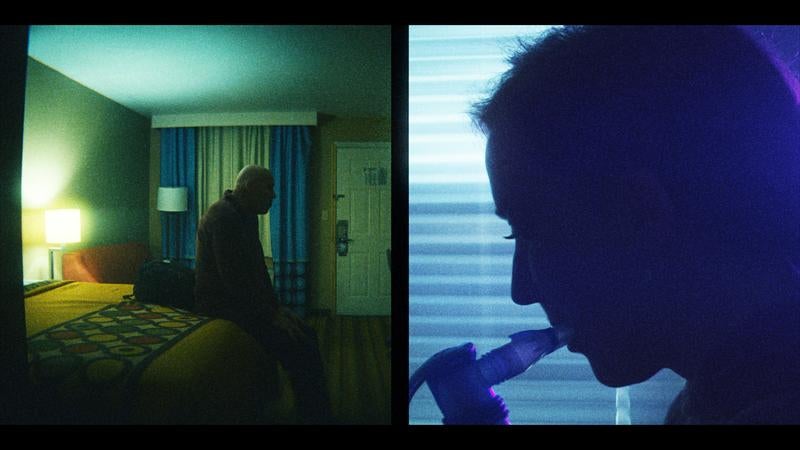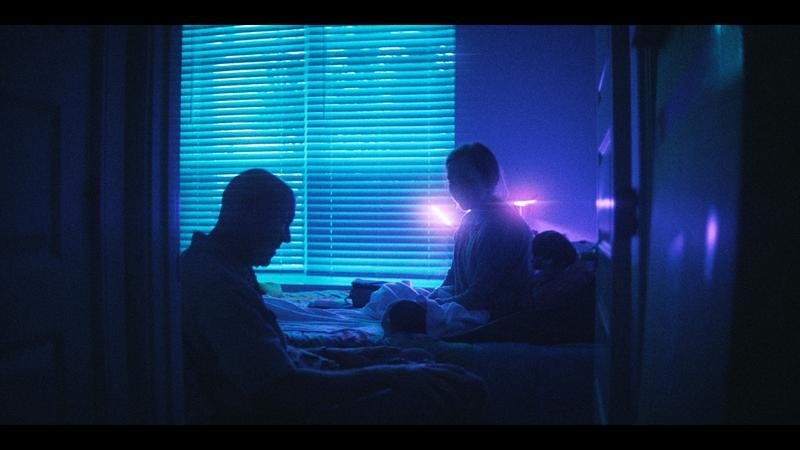A woman is relaxing before a fireplace when a male figure enters the frame.
“Here you go,” he says, handing her a vial. “That’s a good five milliliters.”
It’s but one quietly awkward scene from the documentary “Spermworld,” directed by Lance Oppenheim ’19. Everybody in the film is connected to a Facebook group called Sperm Donation USA, where prospective parents can connect with volunteer donors, without the anonymity and cost of traditional sperm banks.
The film, now streaming on Hulu, was produced by The New York Times and inspired by a 2021 story on the high demand for rogue donors.
Oppenheim’s topic is unusual and provocative, but he said what struck him were the motivations of his subjects. “It’s not just about the desire to have a child,” offered the bicoastal director, whose first full-length documentary was “Some Kind of Heaven” (2020). “It’s about not feeling alone in this world. It’s about something bigger than yourself.”
We caught up with the 2019 Art, Film, and Visual Studies graduate to learn more about his new project. The interview was edited for length and clarity.
The film opens with an encounter between Anica and a donor named Kyle. How long ago did you capture this footage?

Steve Walker (left) with Rachel Stanley, who wants to get pregnant despite having cystic fibrosis.
Film stills courtesy of FX


We started filming with Kyle in 2021, and that was our second day of shooting. For me, it’s an important scene for a few reasons. For one, it’s the only scene in the film that results in a successful pregnancy. I also wanted the film to have this uneasiness, this unpredictability. How do these two people know each other? What are they even doing? And because she successfully gets pregnant — leading to this beautiful, transcendent experience — it showcases the potential, the magic that “Spermworld” can yield.
When did you know this subject could sustain a feature-length documentary?
The process of looking at people’s Facebook posts … I was like, “There’s no way this can be a short film.” The fact that there were so many people attempting to find themselves through the process of creating life — that to me felt like a deeply existential thing you could watch forever.
Say more about the Facebook group and its role in the filmmaking process.
I kept going back to it, because I was really moved by the sense of community there. You see not just men advertising themselves, hoping someone will choose them. You see people talking about their desires. It’s almost like a support group for people trying to get pregnant.
Whenever I was confused about where the film was going, or why I was making it, I would go back to their posts. I knew I wanted the movie’s tone to mimic the experience of reading them.
What drives women to this group and similar online forums?
There are many reasons, but a major one is economics. Sperm banks are cost-prohibitive for so many. The idea that you can get free sperm from someone who’s willing to hand it over gives some people a real sense of agency and community.
I didn’t know sperm banks were so expensive.
It’s crazy. You have to pay like $1,000 per vial. Maybe it’s strange to see people in the movie going the unregulated route, but there’s nothing stranger to me than going to a place that’s so deeply monetized.
Let’s turn to some of the characters we meet in the film, starting with super-donor Ari Nagel, who has fathered well over 100 children and spends his time crisscrossing the globe to visit them.
He’s been in the media so many times; initially I was wary of engaging with him. But then I became interested in how he was stuck in this loop. Everyone around him was saying, “You’ve got to stop doing this to yourself. You have a problem.” He sort of acknowledged that he wanted to stop and chart a new course. But also, he was aware that he could never stop because it gives his life so much purpose.
I was really drawn to donor Tyree and his fiancée, Atasha, a woman who dreams of becoming pregnant herself.
I found Tyree on Facebook and then an associate producer, David Malmborg, first talked to him over Zoom. David told me Tyree was engaged, and maybe his fiancée would want to participate in the film. So that was the first place I went — “I find you interesting, but I find your fiancée interesting as well.” These movies require so much vulnerability and trust. I have to be honest with everyone from the very beginning about what I’m trying to do.
Also fascinating is Steve, a 60-something divorcé and brand-new donor. He appears romantically inclined toward Rachel, a much younger woman who hopes to become pregnant despite living with cystic fibrosis.
Donating is something he’s doing to fill this void, to feel he can contribute meaningfully to society. His relationship with Rachel starts in this ambiguous place, where the two of them are spending more time together than you would expect with the traditional sperm donor/recipient dynamic. Ultimately, whether or not there’s a romance is irrelevant, because they’re both so aware of their own mortality.
It occurs to me that our culture fixates on certain women’s drive to become parents. Did you set out to capture that urge from the male side?
One thing I noticed early on is that women joined the Facebook group with the desire to get pregnant. And if they achieved that, they would quickly leave. The men stuck around. They fulfilled other people’s desires. But then they returned to their lives, where they are in most cases completely disconnected from their donor children.
I was really interested in that purgatorial space, where they’re doing this to help people, but they’re really doing it for themselves. They’re giving back to give their own lives purpose. And when they’re done, they basically return to a world that feels meaningless. This theme keeps coming up, and I knew it wasn’t necessarily gendered after finding Atasha and Rachel — whom I consider the heart of the movie. These are people solely defining themselves by their attempts to have children — and hoping it will change things for the better.
Source link

